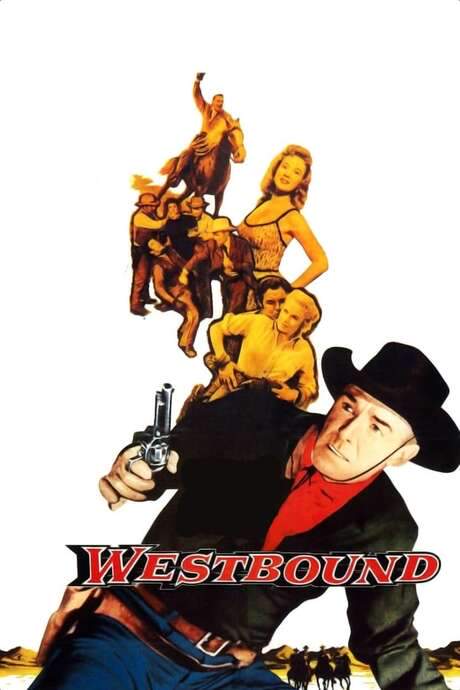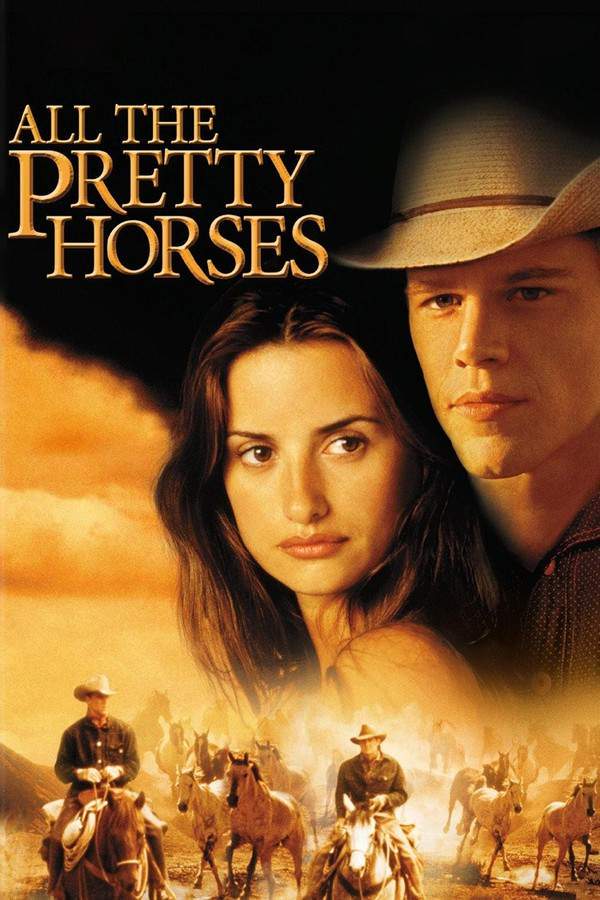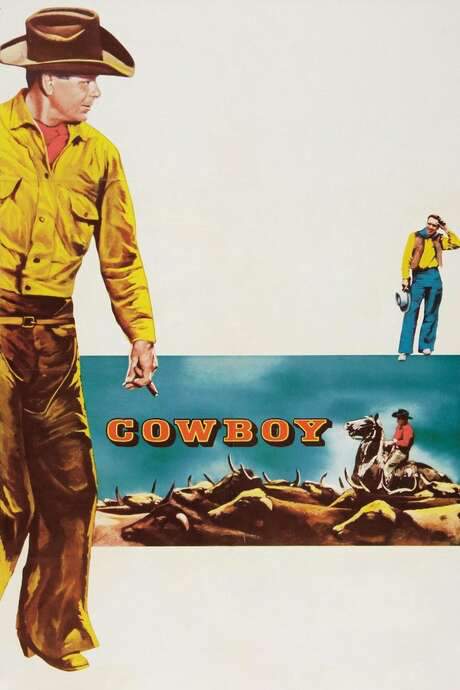
The Westerner
Year: 1940
Runtime: 100 min
Language: English
Director: William Wyler
In the American West, drifter Cole Harden is accused of horse theft and must confront the notorious Judge Roy Bean. He cleverly avoids trouble by claiming to know actress Lily Langtree, but his respite is short-lived. When the judge's men commit a brutal act against an innocent homesteader’s father, Cole seeks retribution. His pursuit of justice leads him on a dangerous path, connecting the corrupt judge to a performance by the celebrated Langtree, and forcing him to confront a web of deceit and violence.
Warning: spoilers below!
Haven’t seen The Westerner yet? This summary contains major spoilers. Bookmark the page, watch the movie, and come back for the full breakdown. If you're ready, scroll on and relive the story!
The Westerner (1940) – Full Plot Summary & Ending Explained
Read the complete plot breakdown of The Westerner (1940), including all key story events, major twists, and the ending explained in detail. Discover what really happened—and what it all means.
Judge Roy Bean, portrayed by Walter Brennan, is the only real law in the dusty Texas town of Vinegaroon in 1882, and he rules with a mix of swagger, whimsy, and a ruthless shorthand for justice. He holds court and dispenses punishment from the doorway of his saloon, turning law into a spectacle that draws crowds as much as it does fear. The town’s atmosphere brims with tension between Bean’s self-styled justice and the growing ambitions of homesteaders who want a fair shake against Bean’s cattle-rancher allies. The air in Vinegaroon hums with the noises of cattle drives, gunfire, and whispered schemes, all under a sun that burns away any pretense of softness.
Into this volatile picture steps Cole Harden, a drifter whose life becomes tangled in Bean’s volatile world after he is accused of stealing a horse that belongs to Chickenfoot, Bean’s loyal, dangerous associate. Harden’s conviction seems almost guaranteed, due to a jury made up of Bean’s men, and the undertaker in town waits eagerly for the verdict and the hanging that will follow. Bean, who is obsessed with Lily Langtry, the English actress, dismisses Harden’s insistence that he bought the horse legally from another man. Harden’s desperation leads him to a bold bluff: he claims to have a lock of Langtry’s hair and to have intimate knowledge of her, a claim that momentarily unsettles Bean and buys Harden time. Yet the evidence and the theatrics still point toward a grim end—until a twist of fate shakes the balance.
The horse-seller who actually sold Harden the horse enters Bean’s saloon and the truth comes to light in a brawl that erupts with surprising ferocity. Harden defeats the real thief in the scuffle, but Bean erupts into violence, killing the other man when he tries to shoot Harden in the back. The moment reveals both Bean’s capacity for brutal decisiveness and Harden’s stubborn willingness to stand up to him. Bean, for all his brutality, senses a kinship with Harden—an echo of the younger Bean’s own boldness—yet his temper is too fragile to tolerate anything that undermines his authority. Harden’s audacity and his willingness to stand with the downtrodden begin to complicate Bean’s calculus of power.
Harden’s loyalties shift the town’s dynamics as he backs the homesteaders, led by Jane-Ellen Mathews and her father Caliphet, who are locked in a long-running feud with Bean and the cattle-rancher faction. Harden presses Bean toward a reckoning, trying to tap the judge’s better nature and even saving Bean from an attempted lynching. The moment underscores a fragile, uneasy bond between them, built on Harden’s boldness and Bean’s hunger for control. Still, progress is fragile; a burned corn crop and the killing of Mr. Mathews push Harden to a difficult decision. With the sheriff’s deputization, Harden gains an arrest warrant for Bean, setting in motion a plan to end Bean’s reign of impunity once and for all.
Arresting Bean in Vinegaroon proves nearly impossible, given Bean’s entrenched power and the loyalty of his men. Bean, ever the showman, learns that Langtry will be appearing in a nearby town and inflates his reach to ensure he has the chance to confront the woman who has captivated him. He dons his full Confederate Civil War regalia and rides out with his retinue to see the performance, entering the theater alone while his henchmen wait behind. Harden, ever the realist and the man who has taken on the mantle of reform, lies in wait inside the venue, prepared to finalize Bean’s downfall. The stage is set for a confrontation that blends personal obsession, political calculation, and lethal intent.
What follows is a tense, brutal gunfight that ends with Harden fatally wounding Bean. Harden carries Bean backstage, meeting the legend he has admired from afar and, in a charged moment, Bean finally meets the truth of the man who has confronted him. Bean introduces himself one last time, but the words are his last; he dies soon after, leaving Harden to shoulder the consequences of his choices and the town’s uneasy peace.
Two years pass, and Harden and Jane-Ellen have married and rebuilt the burned farm, demonstrating a fragile hope that the land can heal after so much blood and dust. The town around them slowly changes as new settlers arrive, signaling the end of an era and the slow, stubborn birth of a different kind of order. The story lingers on the tension between justice and vengeance, between bold individualism and communal responsibility, and it centers on the characters who are willing to risk everything to claim a future in a town where law is literally a matter of who commands the room, who wields the gun, and who dares to challenge the status quo.
In the end, the tale is not simply about a bloody showdown or a reformer’s crusade; it’s about a complex, uneasy equilibrium in a frontier town where power can be as intoxicating as the promise of a fresh start. Harden’s courageous stand against Bean and the subsequent rebuilding of a community offer a quiet, patient note of renewal, even as the memory of Bean’s flamboyant justice remains a potent reminder of the costs of power untempered by mercy. The film closes on a future that promises growth and resilience, even as the past continues to cast a long shadow over Vinegaroon.
Last Updated: October 09, 2025 at 15:47
Explore Movie Threads
Discover curated groups of movies connected by mood, themes, and story style. Browse collections built around emotion, atmosphere, and narrative focus to easily find films that match what you feel like watching right now.
Movies about confronting corrupt power like The Westerner
Stories of ordinary people standing against corrupt power in a lawless land.For viewers who enjoyed the tense standoff in The Westerner, this thread features movies like it, where heroes challenge corrupt judges, sheriffs, or businessmen. These similar Westerns and dramas explore the high-stakes struggle for justice in lawless territories.
Narrative Summary
The narrative follows a protagonist, often an outsider or common person, who is forced into a confrontation with a powerful, corrupt individual. The conflict escalates from a personal grievance to a broader moral struggle, culminating in a decisive and often violent showdown that reshapes the community.
Why These Movies?
These films are grouped by their shared focus on a clear moral adversary and a tense, escalating conflict. They deliver a specific kind of satisfaction derived from seeing justice triumph over personalized corruption, often set against a harsh, unforgiving backdrop.
Bittersweet stories of justice and sacrifice like The Westerner
Journeys where justice is achieved, but at a significant personal cost.If you liked the ending of The Westerner, where justice comes with a price, this thread collects movies with a similar bittersweet feel. These films show characters achieving their goals but carrying the emotional weight of their journey, perfect for fans of mature, redemptive narratives.
Narrative Summary
The protagonist embarks on a difficult path driven by a need for justice or personal redemption. They succeed in their primary objective, but the victory is tempered by the loss of allies, personal innocence, or peace. The conclusion is hopeful yet sober, acknowledging the cost of change.
Why These Movies?
These movies are unified by their emotionally complex conclusions. They balance the satisfaction of a goal achieved with the sobering reality of its cost, offering a more nuanced and mature emotional experience than purely triumphant or tragic endings.
Unlock the Full Story of The Westerner
Don't stop at just watching — explore The Westerner in full detail. From the complete plot summary and scene-by-scene timeline to character breakdowns, thematic analysis, and a deep dive into the ending — every page helps you truly understand what The Westerner is all about. Plus, discover what's next after the movie.
The Westerner Timeline
Track the full timeline of The Westerner with every major event arranged chronologically. Perfect for decoding non-linear storytelling, flashbacks, or parallel narratives with a clear scene-by-scene breakdown.

Characters, Settings & Themes in The Westerner
Discover the characters, locations, and core themes that shape The Westerner. Get insights into symbolic elements, setting significance, and deeper narrative meaning — ideal for thematic analysis and movie breakdowns.

More About The Westerner
Visit What's After the Movie to explore more about The Westerner: box office results, cast and crew info, production details, post-credit scenes, and external links — all in one place for movie fans and researchers.




























